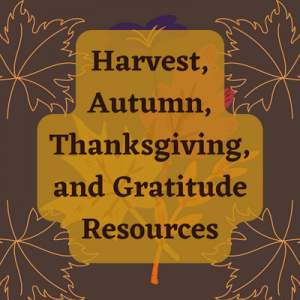by Laurie Klein
Every November 11th, across the world, ancient, autumnal festivities honor St. Martin the Merciful. Gatherings may include lantern parades, bonfires, stories, wine tasting, and more.
Born in the 4th century, Martin radiated kindness lifelong. For a time, he served Emperor Constantine in the Roman army. One legend tells of the winter he met a man in rags, begging near the city gate. Martin drew his sword. The shivering outcast must have crumpled, expecting a death blow.
Instead, the saint-in-the-making slashed his military cape of wool, then wrapped half of it around the freezing man.
That night, Jesus appeared in Martin’s dreams wearing the poor man’s cape, telling the angels that Martin had clothed him, too.
Increasingly, Martin’s faith conflicted with soldiering, so he resigned his post. Denounced as a traitor, he was thrown into prison. Finally released, he moved to France, where his merciful care for those in need drew notice. Eventually, local townsfolk insisted he become their bishop. An old story claims he hid in a pen of geese to escape being tapped for holy office.
But those flustered honkers gave him away.
True or not, history confirms he became bishop, beloved by all.
Another popular account depicts Martin resting one evening among the dunes—where his donkey abandoned him. Local children, seeing the bishop limp back into the village, armed themselves with lanterns and gave chase. Finally, exultantly, they returned with the animal. In gratitude, so the story goes, Martin miraculously transformed the donkey’s droppings … into sweet rolls.
To this day, volaerens (Flemish for buns shaped like donkey turds) deck the shelves in Dunkerque bakeries.
Celebrants worldwide also light bonfires or roast a goose or bake gingerbread men. Some communities stage contests for the best “root print”: entrants carve beets, then ink and print the patterns to mark the year’s final harvest.
School children make lanterns to commemorate the rescue of Martin’s runaway donkey, then parade with them from house to house, singing carols about light.
Laterne, Laterne
Sonne, Mond und Sterne
Brenne auf, mein Licht,
Brenne auf, mein Licht
Aber nur meine liebe Laterne nicht.
Lantern, Lantern,
Sun, moon and stars,
Burn, my light,
Burn, my light,
But not only the light of my dear lantern.
Words like these suggest the radiant love of Christ among us, both today and long ago—the same love that moved Martin to intercede for the poor, viewing them as equals.
In 2007, on St. Martin’s Day, Pope Benedict XVI, perhaps reflecting on the Legend of the Cape, said this:
May St. Martin help us to understand that only by means of a common commitment to sharing is it possible to respond to the great challenge of our times: to build a world of peace and justice where each person can live with dignity.
I long to impart this ideal—along with some fun—to my family. And so I imagine my grandkids re-enacting the wintry beggar scene: the bitter cold, a light saber, small hands tearing an old sheet in two.
I’ve already bought lanterns with battery candles at the Dollar Store. Before parading through the neighborhood park, we’ll don mufflers and crazy hats, then belt out “This Little Light of Mine” and “I Saw the Light.”
Maybe I’ll teach the English version of “Ich geh mit meiner Laterne”
I Walk with My Lantern
I walk with my lantern,
And my lantern with me.
There above, the stars shine,
And we shine here below.
My light is off,
I go home,
Rabimmel, rabammel, rabumm.
Because . . . who wouldn’t want to sing Rabimmel, rabammel, rabumm?
My little ones will love the miraculous tale about donkey turds! I could even bake volaerens. After our procession at dusk, I just might win over the beet-averse with this great recipe: “Beet, Goat Cheese & Honey Tart” (directions below). For backup, I’ll also bake gingerbread men. The kids can decorate them with raisin eyes, a halo of lemon zest, and a crimson, half-cape of icing.
In this life we cannot know how much we owe to saints we have never heard of,
or to saints who live with us unrecognized, but there are a few saints
whose light sends such a beam through the darkness of this world
that the darkness not only cannot extinguish it
but is forced to recognize it and cannot forget it. —Elizabeth Goudge
Fellow celebrants, let’s light up a life. A family. A culture. The long, cold night.
***
Libby’s Exquisite Beet, Goat Cheese & Honey Tart (6 servings)
1 sheet puff pastry, thawed
1 egg, beaten
6 oz. spreadable goat cheese (or cream cheese)
1 can Libby’s Sliced Beets, drained
¼ t. salt
¼ t. pepper
1 T. crushed pistachios
3-4 T. honey
1 T. chopped chives (or green onion tops)
Preheat oven to 375 F.
Gently unfold pastry on baking sheet, brush with egg.
Spread cheese over egg wash. Layer beet slices on top. Add seasonings and nuts.
Bake for 12 minutes, or until golden brown.
Remove and drizzle with honey. Garnish with chives.
Make a lantern https://www.theomaway.com/children/st-martins-day-lanterns/
Find the songs (with simple animation) here:
https://www.youtube.com/watch?v=J3Nl0beM6pc
https://www.youtube.com/watch?v=_f6StA8aduE
https://www.youtube.com/watch?v=9_yBTKBxZiI
Photo by Guilherme Stecanella on Unsplash
As this season of gratitude, holidays and holy days begins, don’t forget to explore the resources here on Godspace. You can find liturgies, children’s activities and more seasonal resources here.


